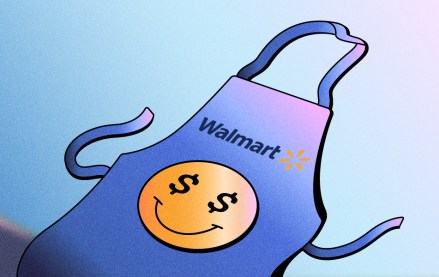Register by Jan 13 to save on passes and connect with marketers from Uber, Bose and more
Inside Kristi Argyilan’s RMN playbook: Lessons from the ‘godmother’ of retail media

Welcome to the era of the ad network arms race. Over the past year, retail media and other ad networks have been pulling out all the stops to convince media buyers that they’ve evolved from performance-driven tools into full-funnel media ecosystems.
With more than 250 ad networks — and counting — all fighting for the same ad dollars, the competition is getting stiff, and the RMN space is becoming increasingly crowded. Amid the so-called retail media gold rush, Kristi Argyilan, the global head of Uber Advertising, turns to her own RMN playbook.
Dubbed the “godmother” of retail media by AdExchanger, Argyilan has seen the ad network category from every angle — buyer, seller, publisher, and client. Argyilan’s retail media scorecard dates back to her stint as president of Target’s Roundel back in 2019, svp of retail media at Albertsons Media Collective in 2021 and global head of Uber Ads since last December.
Digiday recently caught up with Argyilan to talk about what retailers are getting wrong in the retail media gold rush, where creativity fits into the RMN boom and a peek inside her retail media playbook.
This conversation has been lightly edited for clarity.
AdExchanger had a headline that called you the ‘godmother’ of retail media. What’s your reaction to that?
I’m just a girl trying to get something done. The reason I got into it is because I’ve seen the media business from every angle. I’ve been a buyer. I’ve been a seller. I’ve been client side. I’ve been agency side. I’ve been publisher side. You can see where the gaps are in the marketplace in terms of really making advertising accountable across the full spectrum from brand all the way to [a sale].
Retail media, commerce media — because of the first-party data that we represent — we’re unlike anything that has come before. I continue to want to bring that to the marketplace with many other really talented and great people in my peer set, and really great partners.
Historically, retail media has been thought of as a lower funnel, conversion channel. From your POV, is there space for creativity in retail media?
Retail media just hasn’t gotten to content yet. They will. First off, things will become more relevant just because AI is going to allow efficiency in the number of creative assets you can develop so that you’ll strike a better relevancy. Then, you’ll also take people off of hands-on-keyboards and have people who really are thinking more about content. You’ll start to see retail media push further and further in that direction.
What from your experience gives you that foresight?
Having worked at Target where we did these beautiful guest engagement moments to [having] a commerce media practice that’s bringing these really rich digital and physical experiences to market is really exciting for me. We have great advertising and content in between all of that too, but we are going to start to look more like — I won’t call it an agency — but more like a media company, where you have a creative group, the technology group and then all of the capabilities in between.
Your experience in this goes back at least 10 years — from Roundel to Albertsons and now Uber. What’s your retail media, commerce media, or ad network playbook?
The first thing that I like to do is really work on brand. What do we — and I mean the retail media, the commerce media’s brand — stand for? What’s our business model? Who’s the consumer that we know and what’s unique about what we know about them? From there, it impacts design, capabilities — like how do we design our products? We don’t just bring audiences and inventory to market. We have to bring it to market in a different way.
What does that look like for Uber?
We know what [customers] need at their house now. We know what they want to eat now, and so my focus is the now. We’ll be in partner meetings and we’ll talk about the capabilities. I love all that but now I need to show how we target the-now-moment — when somebody is in the middle of their mission [or shopping journey]. I don’t need to talk to [shoppers] until three weeks before and I don’t need to talk to them three weeks after. It’s right when they’re in that window and how do we do that with fluidity and prove the value?
There’s a retail media gold rush happening — an arm’s race to crank out measurement tools, off-site partnerships and more. From your perspective, what is the industry getting wrong in terms of said gold rush?
They’re not applying marketing principles. If you look across even just some of the announcements that are happening, you could pull out one name and insert another name and be like, “OK, I saw that here, here and here.” Clients are begging for that differentiation because they have to choose. They can’t advertise with all 500 [networks].
More in Marketing

Inside the brand and agency scramble for first-party data in the AI era
Brands are moving faster to own first-party data as AI and privacy changes alter the digital advertising landscape.

Walmart Connect takes a play out of the Amazon playbook to make agentic AI the next battleground in retail media
The next retail media war is between Walmart Connect’s Sparky and Amazon’s Rufus, driven by agentic AI and first-party data.

What does media spend look like for 2026? It could be worse — and it might be
Forecasts for 2026 media spend range from 6.6% on the lower end to over 10% but the primary beneficiaries will be commerce, social and search.









